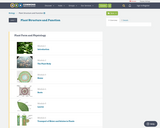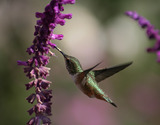
This Unit is Transdisciplinary reinforcing the importance of the honeybee.
- Subject:
- Applied Science
- Environmental Science
- Life Science
- Mathematics
- Material Type:
- Activity/Lab
- Date Added:
- 03/06/2019

This Unit is Transdisciplinary reinforcing the importance of the honeybee.

Biology is designed for multi-semester biology courses for science majors. It is grounded on an evolutionary basis and includes exciting features that highlight careers in the biological sciences and everyday applications of the concepts at hand. To meet the needs of today’s instructors and students, some content has been strategically condensed while maintaining the overall scope and coverage of traditional texts for this course. Instructors can customize the book, adapting it to the approach that works best in their classroom. Biology also includes an innovative art program that incorporates critical thinking and clicker questions to help students understand—and apply—key concepts.



By the end of this section, you will be able to:Describe what must occur for plant fertilizationExplain cross-pollination and the ways in which it takes placeDescribe the process that leads to the development of a seedDefine double fertilization

Charleston County School District Nutrition Services and the Green Heart Project are excited to be partnering this year for Harvest of the Month with their friends from The Bee Cause Project providing delicious honey. Enjoy this fun and easy demonstration of Roasted Sweet Potatoes with Honey and Cinnamon! Simple and delicious foods from Mother Nature are always a winner with your students!

The Great Sunflower Project is a great way to use Citizen Scientist's observations of bees nationwide to create an online map of the bee population with special attention given to sunflower pollinators. Your students can join the thousands of volunteers to gather pollinator information as part of this data collection. With the bee population in decline, students can actively assist in getting to the bottom of the causes of this environmental issue. There is an introductory video provided in English and Spanish by PBS, a Quick Start Guide, maps, opportunities to observe individual data, and loads of other resources to get your students outdoors and counting pollinators!